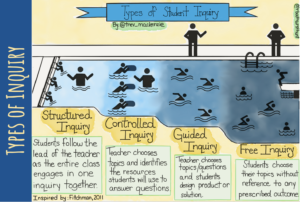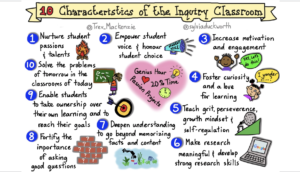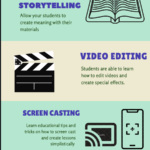Trevor MacKenzie visited our class and discussed what inquiry-based learning was and how we can teach in our classrooms. He explains the 4 differences of inquiry learning; structured, controlled, guided, and free inquiry. He discussed with the class how these areas of inquiry related to a swimming pool. Where structured is in the shallow area, and then it gradually gets deeper until the deep end where free inquiry takes place. The gradual release of responsibility is reflected as well, as the teacher has more hands-on instruction for structured inquiry, and then over time the teacher becomes less involved in the controlled and guided inquiry, and then reaches free inquiry where students have free control and choice in their ideas. Students are then able to take control of their learning and become self-reliant and academically responsible. Trevor also shared how students become more passionate and achieve higher grades when working on areas of academia that they are interested in. This was apparent in the video we watched on high tech high, where they focused on project-based learning and had the students work together on a free inquiry at the end of the school year. Here is a photo from Trevor MacKenzie that describes the areas of inquiry learning. Photo of Inquiry Learning by @trev_mackezie (Trevor MacKenzie).

He also mentioned the important characteristics of an inquiry classroom. If a teacher maintains these values and characteristics the students will reach their full potential of learning through inquiry and self-discovery. Overall, the students will start to take account of their own learning and develop their own ideas and start understanding their passions and unique understandings. Sylvia Duckworth created a photo that shows the important characteristics of an inquiry classroom.




